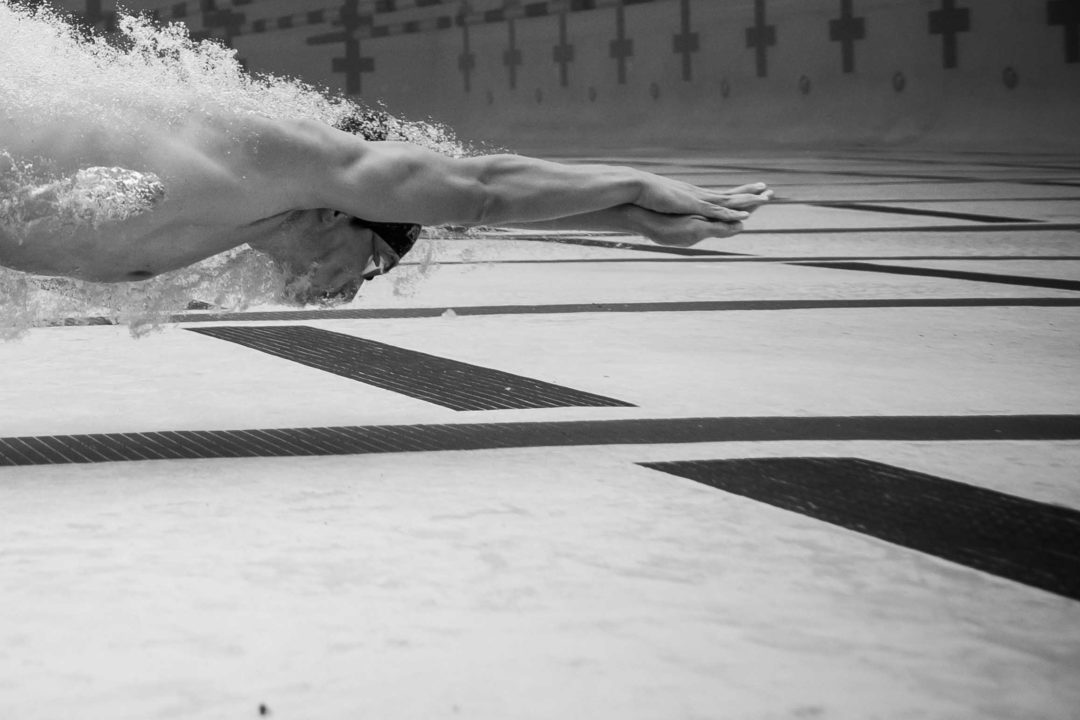Improving individual metrics generally leads to improved outcomes, but it’s not always a given. Sometimes, in developing certain metrics, another metric declines to a point where it starts to negatively affect an athlete’s performance. To determine if this is happening, look at Speed.
TritonWear measures speed as the average speed over the course of an entire lap. Every aspect of the performance plays a role in speed.
Calculation: Distance of lap/Split Time
Knowing speed per lap is useful in determining pacing strategies, especially for longer distances, identifying where the swimmer is going too slow or too fast so these areas can be worked on. But you can use speed to pinpoint even more specific changes that need to be made.
The best way to make the most out of this metric is to see how changes in other metrics affect speed. If changing a metric increases speed, keep at it! But if speed goes down, you might need to reassess and take other metrics into consideration.
Distance Per Stroke (DPS) and Speed
Lengthening strokes to increase DPS should lead to a faster speed – using longer and stronger strokes to swim faster and cover the same distance in a shorter amount of time. If it slows you down instead, check Stroke Rate.
The trade-off of increasing DPS is the decrease in stroke rate. If done effectively, the loss of speed resulting from slowing down stroke rate should be offset by the increase in DPS. However, this is not always the case. A powerful stroke can only take you so far. The advantage of increasing DPS comes from being able to capitalize on the momentum gained from the pull, which will not happen when too much time is spent between stroke turnovers.
So if increasing DPS slows down stroke rate significantly, negatively affecting speed, either
- Drop DPS slightly in favour of maintaining a faster stroke rate, or
- Maintain DPS and work on increasing stroke rate until speed increases
Stroke Rate and Speed
Just as with DPS, an effective change in stroke rate is one that contributes to a faster swim. Increasing stroke rate should not come at the expense of proper form and technique. If faster strokes lead to a slower speed, check DPS.
When it comes to DPS and stroke rate, it’s all about finding the balance that optimizes speed. A drop in DPS is expected when increasing stroke rate, but the key is to minimize the DPS loss, to ensure speed is gained. A faster stroke rate is not worth the extra energy expenditure if it results in rushing through strokes and slipping through the water (translated into a decrease in DPS).
Time Underwater and Speed
The ideal time spent underwater after the push-off or dive varies from one swimmer to the next, and between strokes and distances. While the general goal is to get the most distance from the wall within the shortest time span and breaking out just before decelerating, a step further is to look at how time underwater affects the entire lap so each swimmer can use their strengths to their advantage.
Measuring time underwater against speed gives a bigger picture of individual swimmer’s strengths when it comes to underwater kicks vs. stroking. Some swimmers have stronger underwater kicks and can use this time to gain as much distance off the walls before breaking surface, while others have stronger strokes and better stroking technique, and can benefit more from breaking out earlier.
If, for instance, a longer time underwater increases speed, then it may be beneficial to aim for consistently longer underwaters. Conversely, if it leads to a decrease in speed, work on improving underwater kicks, but also consider earlier breakouts to maximize speed from stroking.
Other Metrics
This can be done with every other metric, so you can use speed to have a deeper understanding of overall performance, and be able to break it down even further. Once you know what needs to be worked on, implement drills to improve metrics, and continue monitoring speed to ensure progress.
Learn more about the key metrics to track for faster swimming in this ebook download, or check out TritonWear’s resource library for more awesome content.
Learn more about how swimmers can improve faster and gain a competitive advantage in this ebook download.
VISIT THE TRITONWEAR HQ
Follow us on Instagram
Like us on Facebook
Follow us on Twitter
TritonWear is a SwimSwam partner.

